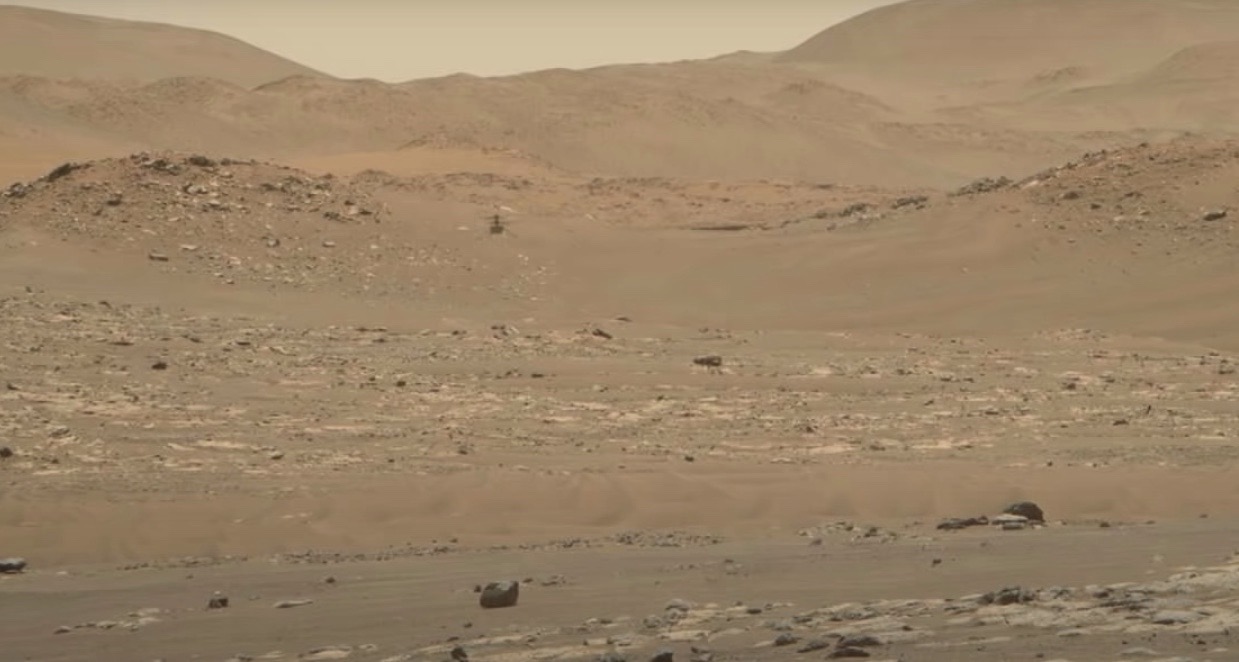Mars helicopter Ingenuity aces 21st Red Planet flight

The Ingenuity helicopter's Red Planet flight tally is up to 21.
The 4-pound (1.8 kilograms) NASA chopper just aced another Mars sortie, agency officials announced today (March 11).
"#MarsHelicopter can’t be stopped! Ingenuity successfully completed its 21st flight on the Red Planet. The small rotorcraft traveled 370 meters [1,214 feet] at a speed of 3.85 meters per second [8.61 mph] and stayed aloft for 129.2 seconds," NASA's Jet Propulsion Laboratory (JPL), which manages Ingenuity's mission, said via Twitter today.
Related: 1 year later, Ingenuity helicopter still going strong on Mars
In February 2021, Ingenuity landed with NASA's Perseverance rover on the floor of Mars' Jezero Crater, which hosted a lake and a river delta billions of years ago. The solar-powered helicopter initially embarked upon a five-flight demonstration mission designed to show that aerial exploration is feasible on Mars despite the planet's thin atmosphere. (Mars' air is just 1% as thick as that of Earth at sea level.)
Ingenuity aced those five flights, and NASA soon granted a mission extension. During this phase, the rotorcraft has been pushing the boundaries of Red Planet flight and serving as a scout for Perseverance, whose main tasks involve hunting for signs of Mars life and collecting dozens of samples for future return to Earth.
During their first year on Mars, Ingenuity and Perseverance explored areas to the south and southwest of their landing site. Both robots are now heading back toward their touchdown zone, on the way to an accessible part of the ancient river delta.
Breaking space news, the latest updates on rocket launches, skywatching events and more!
The Perseverance team is eager to start studying the delta up close, because deltas here on Earth are good at preserving carbon-containing organic chemicals and signs of life itself.
During its 21 Martian flights, Ingenuity has stayed aloft for a total of 38.8 minutes and traveled 15,246 feet (2.89 miles; 4.65 kilometers). That's more ground than Perseverance has covered on Mars; the rover's odometer currently reads 2.73 miles (4.39 km).
Mike Wall is the author of "Out There" (Grand Central Publishing, 2018; illustrated by Karl Tate), a book about the search for alien life. Follow him on Twitter @michaeldwall. Follow us on Twitter @Spacedotcom or on Facebook.

Michael Wall is a Senior Space Writer with Space.com and joined the team in 2010. He primarily covers exoplanets, spaceflight and military space, but has been known to dabble in the space art beat. His book about the search for alien life, "Out There," was published on Nov. 13, 2018. Before becoming a science writer, Michael worked as a herpetologist and wildlife biologist. He has a Ph.D. in evolutionary biology from the University of Sydney, Australia, a bachelor's degree from the University of Arizona, and a graduate certificate in science writing from the University of California, Santa Cruz. To find out what his latest project is, you can follow Michael on Twitter.
